27 Plants That Don’t Lose Leaves In Winter! +Growing Tips [2023]
Are you on a hunt for a plant that doesn’t lose its leaves in winter because you are tired of looking at skeletal trees and plants throughout winter?
Or are you just tired of seeing your plants dying once fall arrives and winter is just around the corner? Evergreen plants would be the solution to your problem.
Evergreen plants are great and durable during the winter. It could beautify your garden and provide privacy from your nosy neighbors throughout the seasons.
It also saves you from the need to clear up the loose leaves when falls come around.
Evergreen plants are the complete opposite of deciduous plants. Deciduous plants are plants that lose leaves in winter.
Evergreen plants on the other hand stay green throughout the year as they are not temperamental plants. They are usually coniferous trees that continue the photosynthesis process all year round which prevents dehydration.
Here, you will find my in-depth list of evergreen plants and discover the best plant that doesn’t lose its leaves in winter for you!
At a glance, they are:
1. Pine Trees
2. Spruce
3. Fir
4. Yew
5. Juniper
6. Tsuga/Hemlock
7. Holly
8. Eucalyptus
9. Cedar
10. Thuja
11. Murray Cypress
12. Boxwood
13. Chamaecyparis
14. Evergreen Azalea
15. Mountain Laurel
16. Avocado Tree
17. Bearberry
18. Winter Heath
19. Golden Euonymus
20. Mimosa (Acacia Dealbata)
21. Oregon Grape
22. Camellia
23. Oak
24. Osmanthus
25. Cotoneaster
26. Olive Tree
27. Arbutus
Affiliate Link Disclosure
Some of the links on here are affiliate links and I may earn if you click on them, AT NO EXTRA cost to you. Hope you find the information here useful! Thanks.
Related Posts
- What Do Plants Need To Grow And Survive? [2022 Guide!]
- How To Preserve Willow Branches [2022 Guide]
- Why Is My Plant Drooping?[And How To Fix It!]
- 7 White Winter Plants For A Cheerful Winter![2023]

1. Pine Tree
The first plant that doesn’t lose its leaves in winter is pine tree. Pine trees are coniferous trees with needle-like leaves that have a waxy coating called cutin, making them evergreen. The cutin on the leaf traps moisture within the leaves to prevent damage from the cold weather and dehydration.
The trapped water is great for the tree to have a continued photosynthesis process. In turn, the leaves stay green and remain on the tree throughout several winters, making it an all-year green plant.
The only time the leaves drop is due to old age and they would be replaced with new leaves almost immediately.
Pine trees are hardy and can tolerate cold climates making them a great privacy screen as well as windbreakers.
Characteristics of pine trees:
- Height is about 10 feet up to 260 feet tall.
- Native to the Northern Hemisphere and parts of the temperate Southern Hemisphere.

2. Spruce
Similar to pine trees, spruce has needle-like leaves with a waxy coating to trap water to prevent dehydration during cold winters.
This is the reason why spruce is a plant that doesn’t lose its leaves in winter, which makes the spruce tree an all-year green plant.
From a distance, it is hard to tell apart spruce from pine, fir, or yew. Spruce trees’ needles are unique as their leaves are four-sided and would roll easily between your fingers.
Usually, the needles are singly attached to each branch as compared to the pine trees where there would be at least a group of two or three needles coming out of the same spot on the branch.
Characteristics of spruce trees:
- Pyramidal shape.
- Grown to be Christmas trees.
- Height is about 60 feet up to 200 feet tall.
- Native to the Northern Hemisphere.
3. Fir
Akin to the spruce, the fir’s needle-like leaves are singly attached to the branch. However, it can be distinguished by the flat needle leaf that makes it nearly impossible to roll it between your fingers.
Similar to pine and spruce, fir trees are coniferous trees that are durable and hardy which makes them great for providing privacy and as windbreakers. Spruce trees can tolerate cold climates and have all-year green foliage.
Characteristics of fir trees:
- Pyramidal shape.
- Grown-to-be Christmas trees (best species used as living Christmas trees are white, balsam, Spanish and noble firs).
- Height is about 33 feet up to 262 feet tall.
- Native to Europe, Asia, North and Central America, and northern Africa.
4. Yew
Yew’s needle-like leaves are similar to fir’s flat leaves but it isn’t as stiff or prickly as fir’s leaves. Yew trees have soft foliage that is spirally arranged on the twigs.
The bark of yew trees is reddish-brown with a purple tone. The red berries are edible but the seeds are poisonous.
Characteristics of yew trees:
- Has red berries that are fleshy cones called arils.
- Smaller in size, where the height is about 35 feet up to 92 feet tall.
- Native to northern Iran, western, central, and southern Europe, southwest Asia and northwest Africa.
5. Juniper
Junipers are also coniferous plants and are evergreen which means it is an all-year green plant.
The evergreen juniper is famous as an ornamental garden plant due to its evergreen nature and smaller size compared to the other coniferous plants or trees. Junipers can easily be used to make Christmas decorations like wreaths.
Characteristics of juniper:
- Has berry-like cones that are edible depending on the species
- Small in size, the height is about 4 feet, and can grow up to 50 feet tall.
- Native to the Northern Hemisphere, UK, and Europe.

6. Tsuga/Hemlock
Tsuga or it is commonly known as hemlock, is another evergreen coniferous tree. However, do not confuse tsuga with the poison hemlock. Tsuga is unrelated to the poison hemlock and is non-toxic.
Tsuga’s needle-like leaves are glossy, soft, and short. Similar to yew, tsuga’s leaves are spirally arranged.
The Canadian hemlock (tsuga Canadensis) species have denser foliage with a clean façade making it great as a privacy screen from nosy neighbors or any unsightly views.
Characteristics of tsuga:
- Height is about 33 feet and can grow up to 197 feet tall.
- Native to North America and eastern Asia.
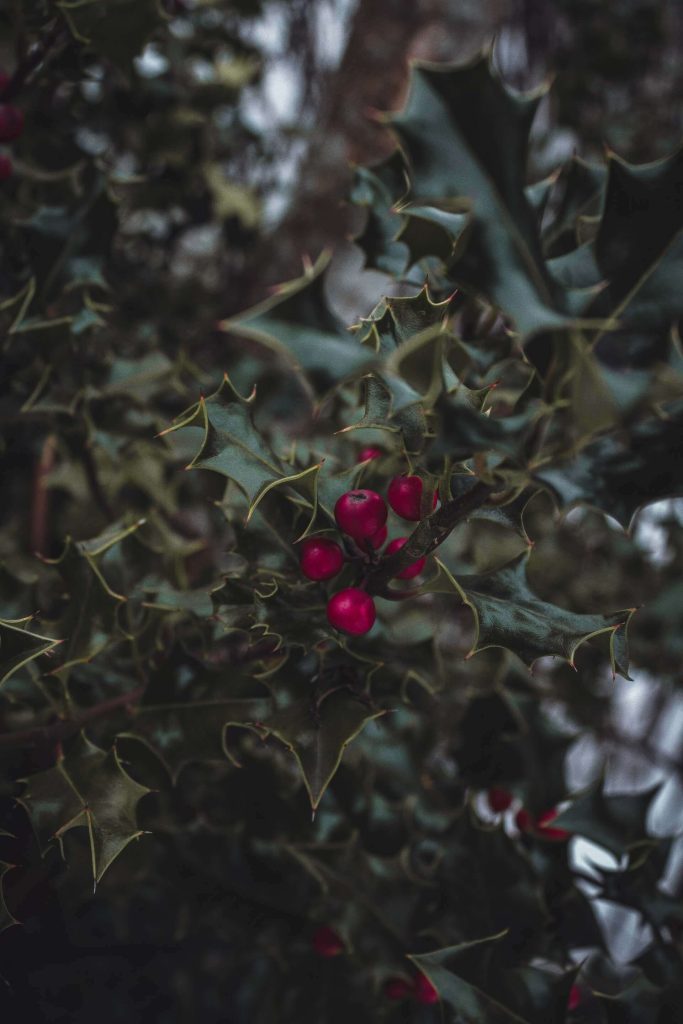
7. Holly
Holly is a flowering plant that has green spiny yet glossy leaves. It is also another popular Christmas ornamental and is a symbol of winter and the Christmas season.
This plant needs well-draining soil with an acidic pH level between 5.0 and 6.0. It does not thrive on alkaline soil, and the leaves will shed due to dehydration.
Characteristics of holly:
- Produces red berries during the winter that are toxic to humans, pets, and livestock.
- The height range is 6 inches up to 70 feet tall.
To maintain a balanced pH soil to keep holly happy, use a slow-release fertilizer specifically made for shrubs like holly.
8. Eucalyptus
Eucalyptus is a fast-growing evergreen tree that has long waxy lanceolate leaves which are in the shade of grey-green or blue-grey. Eucalyptus is known for its distinct sharp camphoraceous smell.
The eucalyptus has attractive and decorative foliage but unfortunately, it is highly flammable. It can spread a wild forest fire very easily. So you should be very careful when you have them in your garden.
Characteristics of eucalyptus:
- The largest eucalyptus’ height range is about 300 feet tall and 24.5 feet wide.
- Native to Tasmania, Australia.
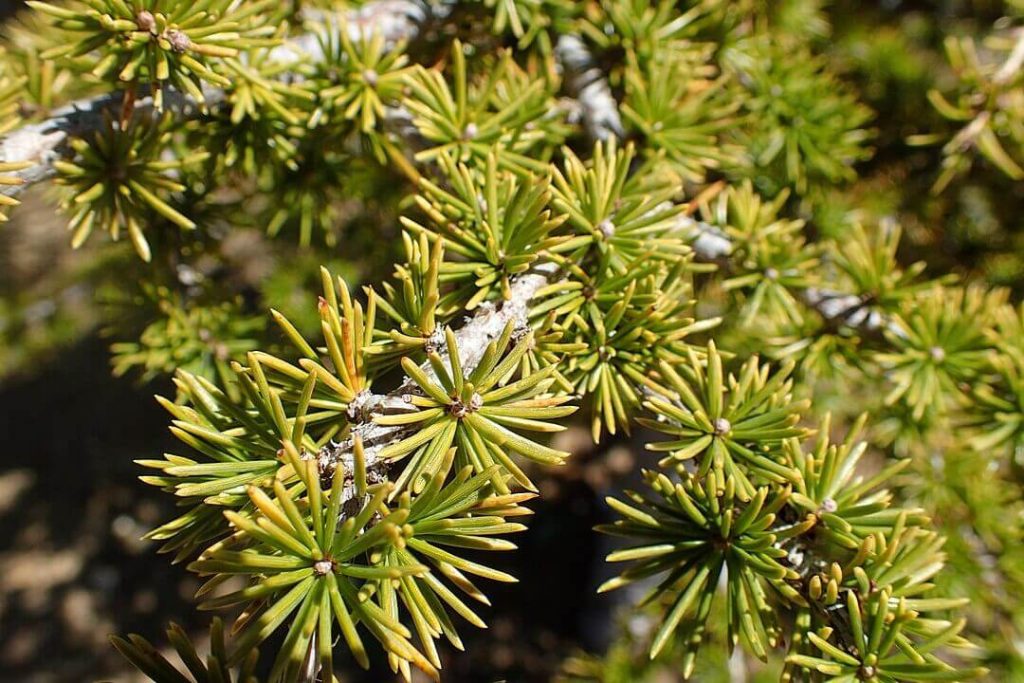
9. Cedar
Photo by Krzysztof Ziarnek, Kenraiz licensed under CC BY 3.0 on Wikimedia Commons.
True cedar trees are coniferous trees that have needle-like leaves which grow in a cluster. These leaves are similar to pine trees where they store water in their leaves to have a continuous photosynthesis process.
There are other species that are named “cedar” but are not the true cedar. True Cedar is aromatic with a spicy resinous scent, oftentimes this scent is to repel bugs and moths.
Characteristics of cedar:
- Height is about 60 feet up to 120 feet tall.
- Native to the Mediterranean region.
10. Thuja
Thuja is a fast-growing evergreen coniferous tree that can grow about 3 feet per year.
It has a soft scaly feathery leaf but can be quite dense. Even though the leaves are soft and feathery, it is drought tolerant and can withstand cold temperate without any damage to the leaves.
Due to the density of the leaves, planting thuja 6 feet apart from one another will give you a nice evergreen privacy screen.
Characteristics of thuja:
- Has scents like true cedar.
- Has soft small cones
- Height is about 10 feet up to 200 feet tall.
- Native to North America and eastern Asia (depending on the species).
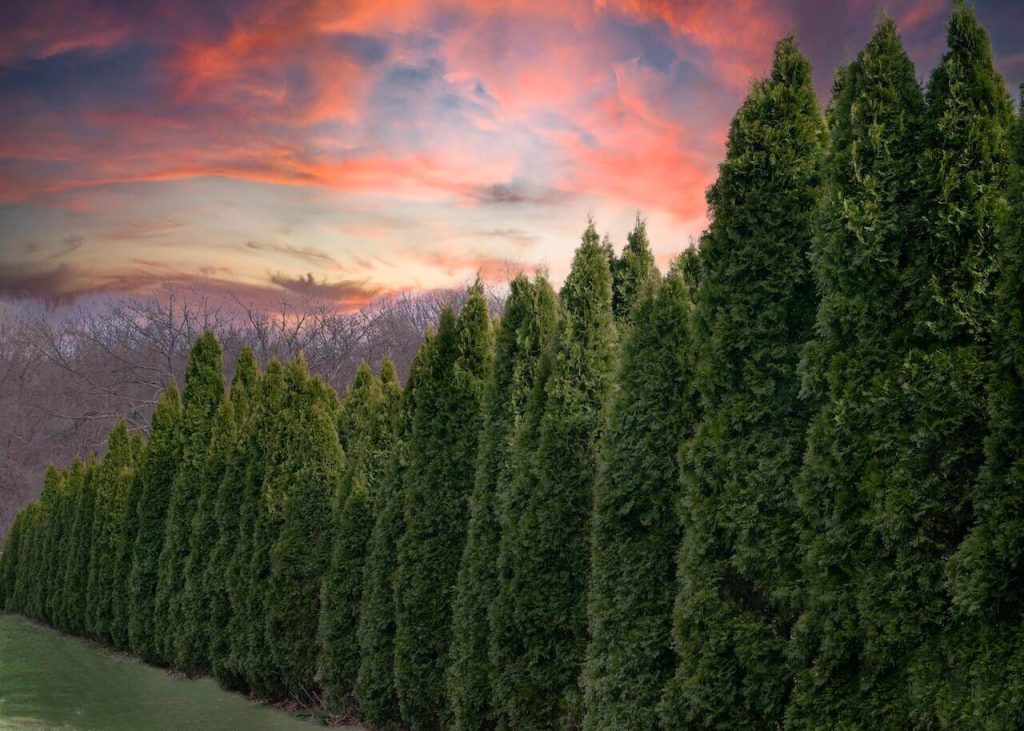
11. Murray Cypress
Murray cypress is one of the fastest growing evergreen shrubs, growing at about 4 feet per year. It’s a tall hardy shrub that can grow to be quite full with its needle-like leaves.
Planting it 5 feet apart from one another can make it an excellent privacy fence to block out your nosy neighbors, busy streets, or any unsightly views.
Characteristics of Murray cypress:
- Height of about 30 feet to 40 feet tall.
- Native to North America and eastern Asia (depending on the species).
12. Boxwood
Next, a plant that doesn’t lose its leaves in winter is boxwood. Boxwood is a small slow-growing broadleaf shrub with leathery rounded leaves. It is a very dense shrub that is often planted as hedges for elegant and more formal landscaping.
Even though boxwood is an evergreen shrub, its newer growth is quite vulnerable to a cold climate. Thus, it is important to protect the boxwood during the winter for the first several years with burlap.
It requires well-draining soil with a soil pH between 6.5 to 7. It is important to always test your soil pH to make sure the boxwood is in the best environment.
Characteristics of boxwood:
- Grown for its foliage rather than flowers.
- Height is about 2 feet to 15 feet tall.
- Native to southern Europe, northern Africa, and western Asia.
13. Chamaecyparis
Chamaecyparis or also known as false cypress is a slow-growing coniferous tree. Unlike pine, fir, or spruce, Chamaecyparis has scale-like leaves which are easily distinguishable.
It is a very hardy tree that requires minimal to no pruning, making it a great low-maintenance hedge for privacy.
Characteristics of Chamaecyparis:
- Height is about 66 feet to 230 feet tall.
- Native to eastern Asia (Japan and Taiwan), and North America.
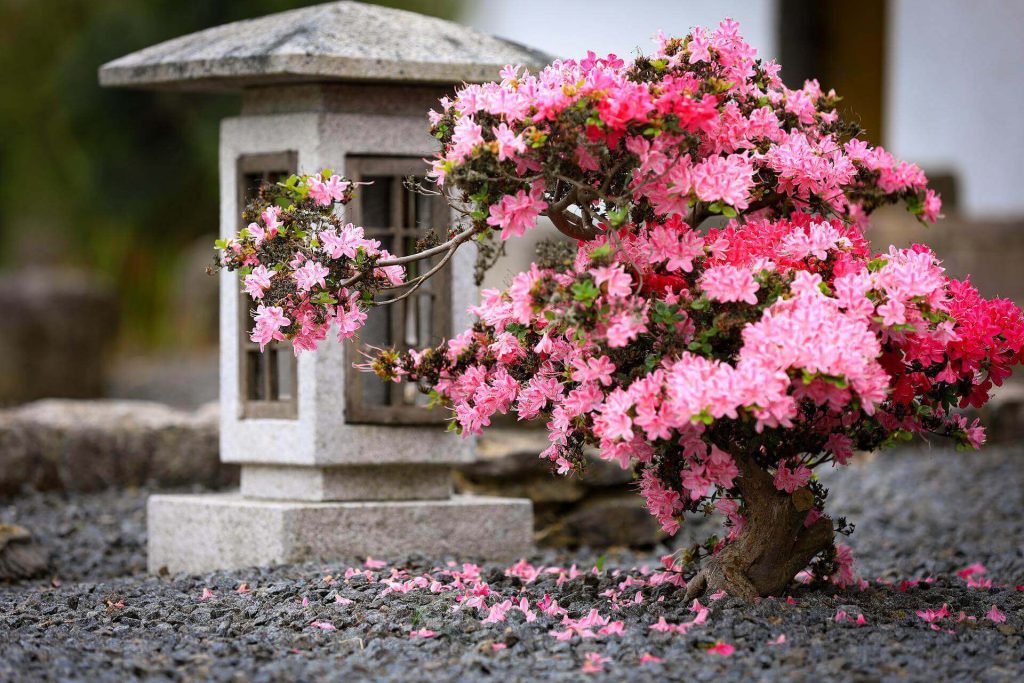
14. Evergreen Azalea
Do azaleas lose leaves in winter? Yes and no.
This is because azalea has both evergreen and deciduous species. The deciduous species are plants that lose leaves in winter.
Therefore, if you would like full leaf coverage throughout the seasons, get yourself an evergreen azalea which is a subgenus of rhododendrons. It would not lose its leaves in the fall and it produces star-shaped flowers ranging from red, purple, pink, or white colored flowers.
Characteristics of evergreen azaleas:
- The height range is no more than 6 feet tall.
- Native to Korea, Japan, and China.
- Susceptible to whiteflies, spider mites, and fungal diseases.
If the need arises, try a horticultural oil, or more specifically organic neem oil to rid of the pests and diseases.
15. Mountain Laurel
Mountain laurel is a small slow-growing broadleaf shrub. It grows about a foot per year. Unlike boxwood, mountain laurel is a flowering shrub with a close resemblance to azaleas.
It is a hardy shrub with deep-green leathery and waxy leaves that can survive lower temperatures of about -10°F.
Characteristics of mountain laurel:
- Produces bright red seeds that are toxic to humans and pets.
- Height of about 10 feet to 15 feet tall.
- Native to eastern North America.
16. Avocado Tree
Do avocado trees lose leaves in winter? No, avocado trees are evergreen fruit trees that have full leaf coverage throughout the year. It is only in the unlikely circumstances when there’s a cold wind that the leaves drop.
The avocado tree produces a creamy fruit that everyone knows and loves, the avocado. It is proven that this fruit is good for our health, it is not just hype.
Characteristics of the avocado tree:
- Avocado leaves are toxic.
- Grows up to 66 feet tall.
- Native to Mexico, west Indian and Guatemalan
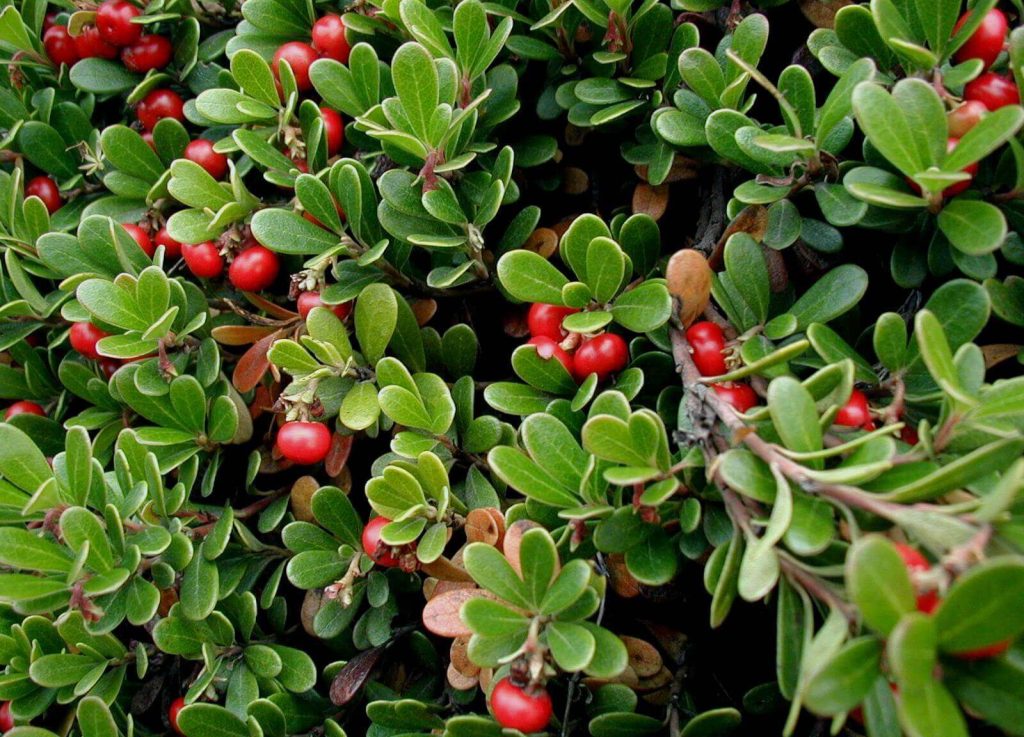
17. Bearberry
Bearberry is a small broadleaf shrub that creeps and is a groundcover. The leaves are small and rounded and stay evergreen all year long.
Making it the best and the most beautiful low-lying shrubs to be added to your landscape.
This shrub produces edible fruit that is non-toxic and the bears love to eat it, thus the name.
Characteristics of bearberry:
- Edible fruit.
- Prefers well-drained sandy or rocky soil with an acidic soil pH level.
- Height of about 3 feet to 6 feet tall.
- Native to the Chicago region.
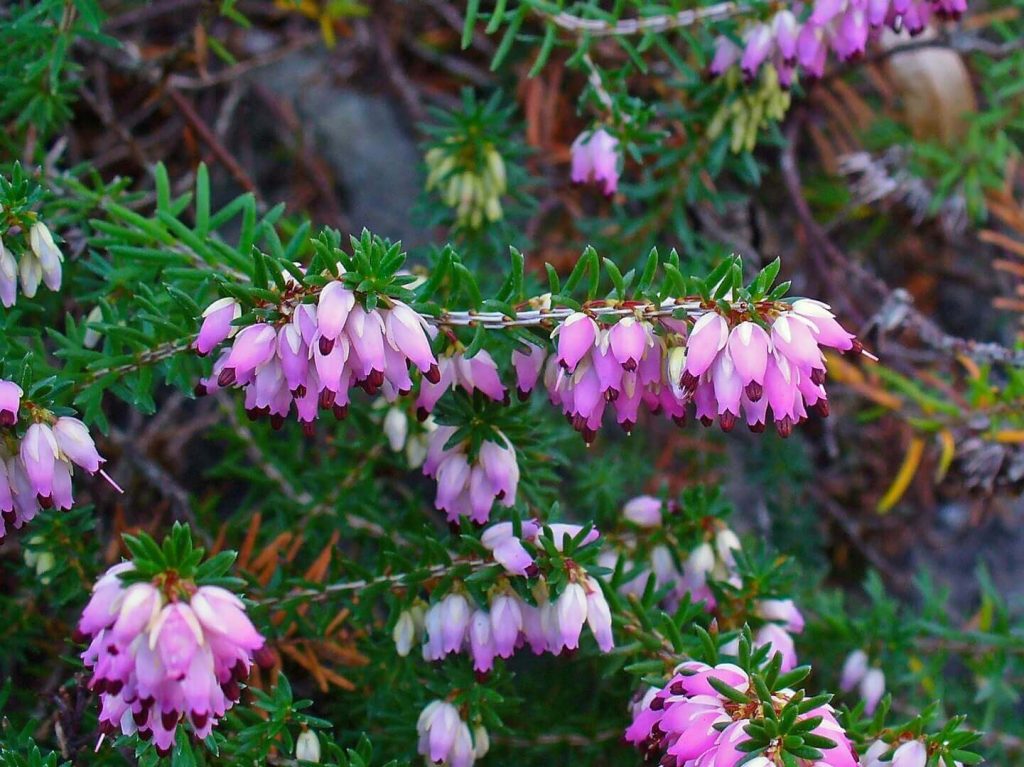
18. Winter Heath
Winter heath is evergreen foliage that flowers during the winter. It is a low-growing shrub with needle-like leaves.
Typically, the flowers bloom from January to April. Making it ideal for the beautification of your landscape and garden during the winter seasons.
The flowers are dainty bell-shaped ranging from either white, pink, or red in colors.
Characteristics of winter heath:
- Easy to grow, low maintenance, and suitable in soil types.
- Height of about half a foot to 1 foot tall.
- Native to central, eastern, and southern Europe.
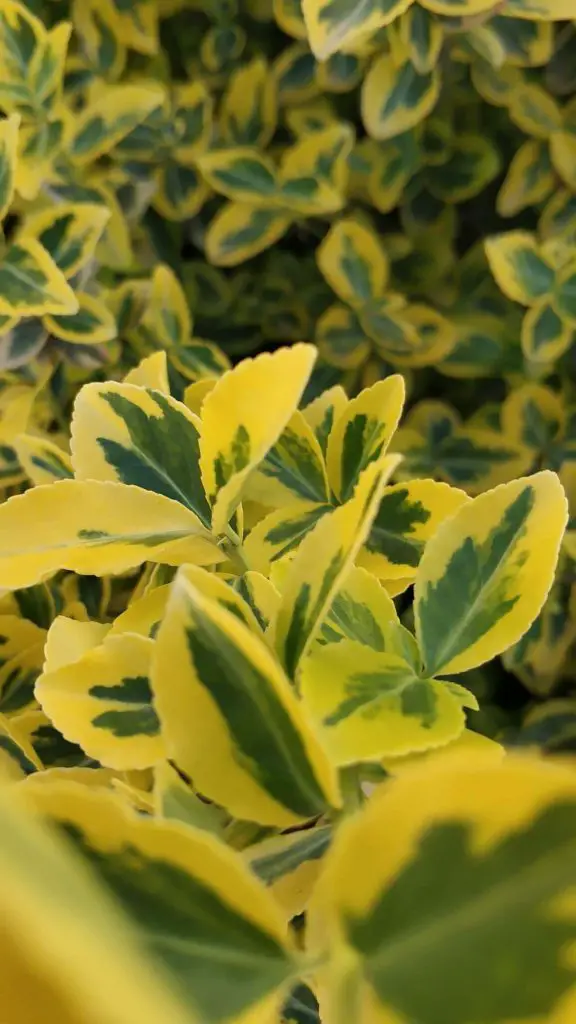
19. Golden Euonymus
Golden euonymus is a variegated plant that has a golden-yellow edging and a green-colored centered leaf. It is a compact evergreen shrub with an oval-shaped glossy leaf that is great all year round.
Generally, golden euonymus is very low maintenance and is a very versatile shrub that will adapt to any condition and soil.
It can be trimmed to be a hedge or be a groundcover to give added colors to the greens in your landscape.
Characteristics of golden euonymus:
- Height of about 2 feet to 5 feet tall.
- Native to Japan.
20. Mimosa (Acacia Dealbata)
The mimosa is a fast-growing evergreen flowering shrub with ferny leaves.
This shrub would add a pop of bright yellow color to your garden during the colder seasons. Mimosa can only withstand winter not lower than 23°F, any lower than that the tree could not survive.
Characteristics of mimosa:
- Requires full sun with slightly acidic and well-drained soil.
- Height is about 40 feet up to 50 feet tall.
- Native to Australia.
21. Oregon Grape
Oregon grapes are evergreen broadleaf shrubs that are dense with spiny leaves looking similar to the holly plant.
The foliage changes colors through the seasons, during the spring it would produce a cluster of yellow flowers, and in the fall the berries will turn to dark blue.
Oregon grape is a slow-growing shrub that thrives in partial shade and on slightly acidic soil.
Characteristics of Oregon grape:
- Grows blue-colored edible berries.
- Height is about 3 feet to 10 feet tall.
- Native to western North America.

22. Camellia
The Camellia is one of the most beautiful flowering evergreen shrubs that bloom from fall to spring.
Camellia has several different flower shapes and colors depending on the cultivars you choose.
The best care for camellia is to plant them in moist acidic soil and a partial shade area, as the sun would help the flowers to bloom.
Characteristics of Camellia:
- Height of about 4 feet to 20 feet tall.
- Native to Asia (Japan, China, Korea).
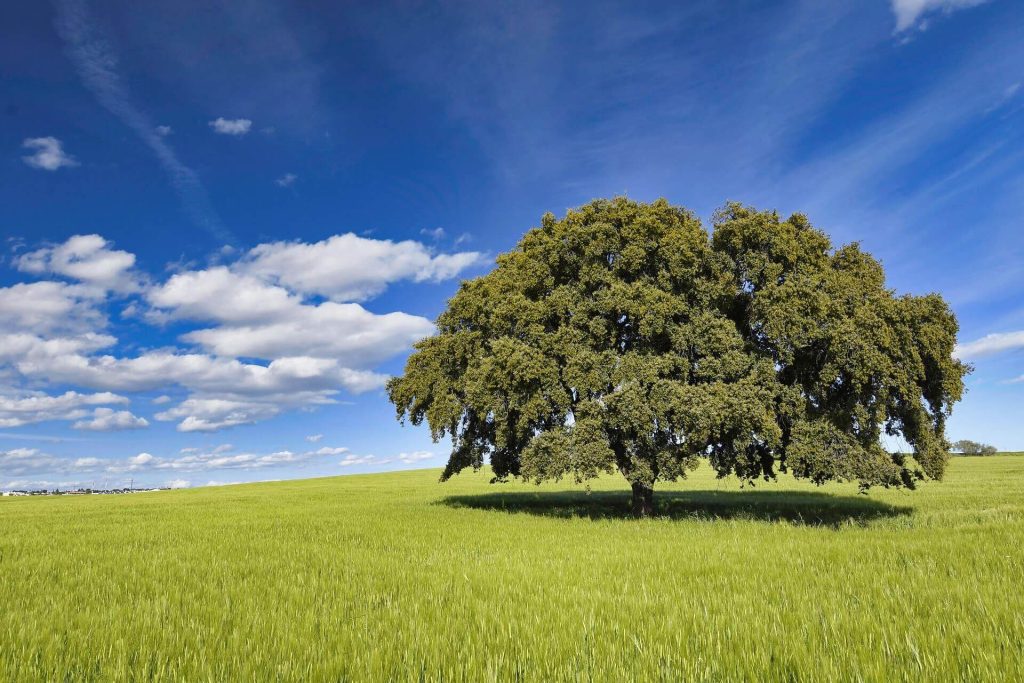
23. Oak
Oak or holm oak in general are evergreen trees. There are other oak species that are deciduous.
Holm oak is a broadleaf tree that has the potential to be a huge rounded tree providing a great amount of shade. Thus it is usually found in gardens and parks.
Characteristics of oak:
- Height is about 69 feet up to 92 feet tall.
- Native to the Mediterranean.
24. Osmanthus
With over 30 species, this flowering plant is evergreen and smells great! It has jasmine-like characteristic fragrant flowers.
In some cultures, osmanthus is used in teas to be infused with black tea or green tea to create osmanthus tea.
Characteristics of osmanthus:
- Height is about 7 feet up to 39 feet tall.
- Native to the Himalayas and eastern Asia.
25. Cotoneaster
Not to be confused between cotoneaster with holly or bearberry, all 3 of them are from a different plant family. Cotoneaster is a woody evergreen shrub that is from the Rosaceae family.
It is a dense shrub with trailing stems studded with small leathery and glossy green leaves. It is great as ground cover for your garden. It has white to pink flowers and bright red fruit.
Characteristics of cotoneaster:
- Berries are toxic to humans
- Thrive in moist and well-drained soil.
- Grows up to 16 feet tall.
- Native to temperate Asia, Europe, and North Africa.
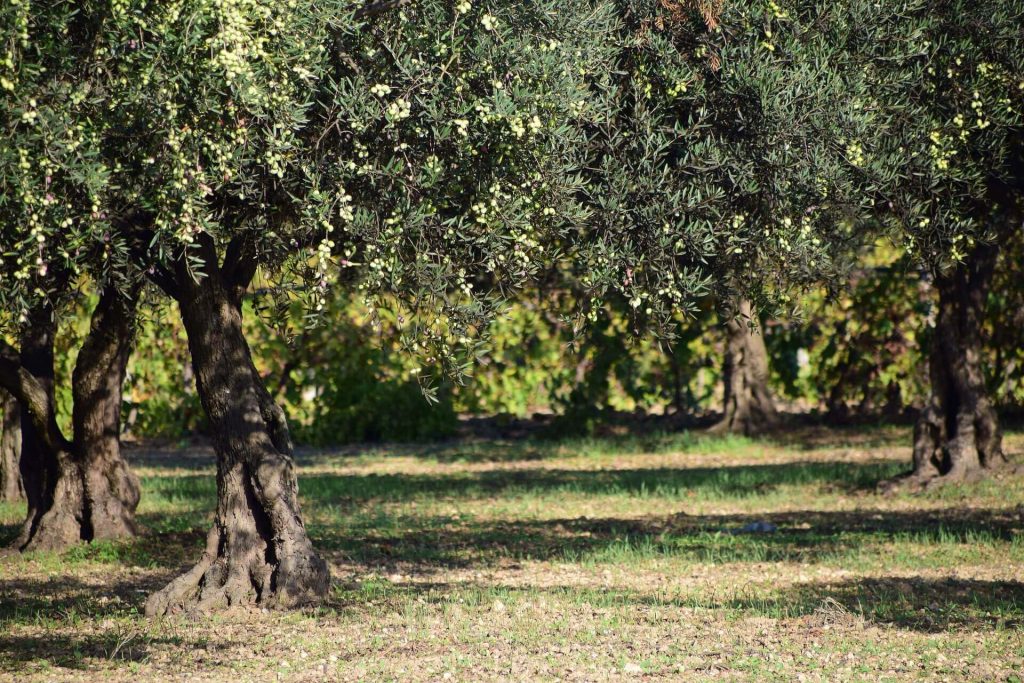
26. Olive Tree
Do olive trees lose their leaves in winter? The answer is no, the olive tree is an evergreen tree which makes it a plant that doesn’t lose its leaves in winter.
However, the olive tree does drop its leaves regularly to produce newer ones throughout 6 to 14 months. This is in no way due to any temperature change.
The olive tree is frost resistant only at a temperature no lower than 20°F. If it gets too cold, growth stunts, and the tree is damaged.
Characteristics of olive tree:
- Susceptible to fungal disease, which can be treated with a fungicide.
- Height is about 25 feet up to 50 feet tall.
- Native to Mediterranean Europe, Africa, and Asia.
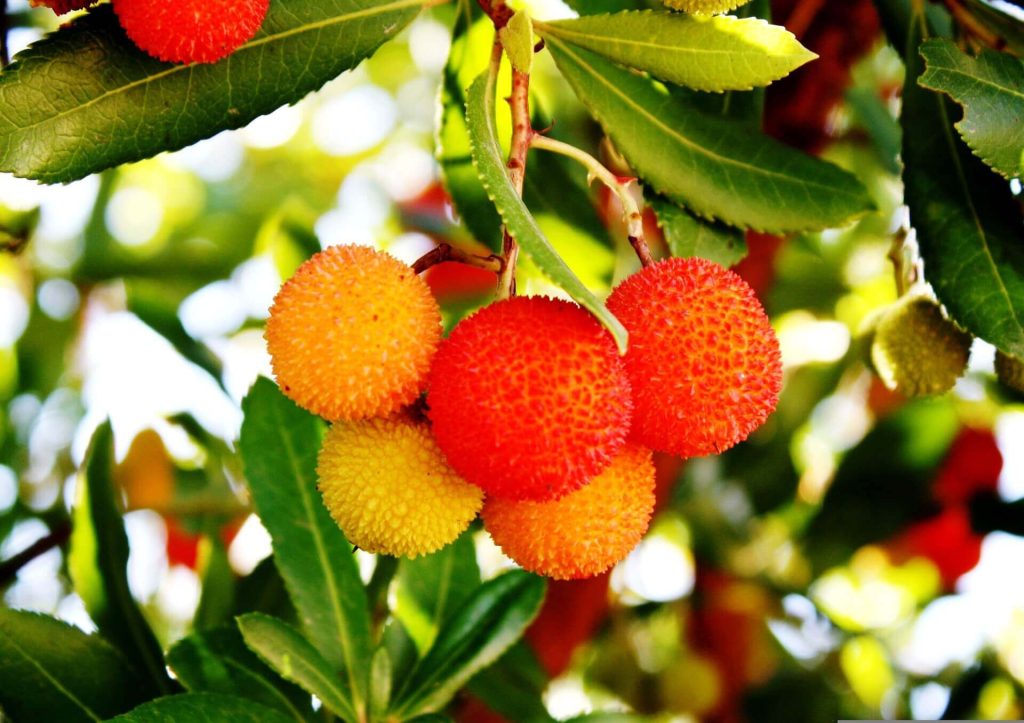
27. Arbutus (Strawberry Tree)
The last Plant that doesn’t lose its leaves in winter is arbutus. The fruits of arbutus resemble that of a strawberry; hence it was known as a strawberry tree. However, it is not related to the strawberry genus, Fragaria.
Arbutus is an evergreen shrub with green and glossy long leaves. This plant can be easily grown and is virtually disease-free and pest-free, very much easy maintenance.
Characteristics of arbutus:
- Berries are edible.
- Thrive in acidic and well-drained soils.
- Height is about 15 feet up to 24 feet tall.
- Native to western Europe and the Mediterranean.
Do Bonsai Trees Lose Their Leaves In Winter?
Yes and no. It depends entirely on the seedling used to grow the bonsai trees.
Bonsai is actually a traditional art that originated in China and Japan. It is the art of growing and training miniature trees to create an aesthetic shape by pruning, trimming, and removing excess branches.
The bonsai trees are miniature trees that can be either evergreen or deciduous trees. So, in order to know whether do bonsai trees lose their leaves in winter depends entirely on the seedling used.
Do Fig Trees Lose Their Leaves In Winter?
Yes they do, fig trees are deciduous by nature, so it is a plant that lose leaves in winter. The fig trees are not adaptable to lower temperatures and would lose some of their leaves in winter.
Fig trees prefer the sun as such winter months are stressful environments for them causing them to lose their leaves.
Why Do Trees Lose Their Leaves In Winter?
Deciduous plants are unable to retain water on their own during the harsh winter and with no water available to the plant since most are frozen due to low temperature, the plant is incapable of photosynthesis to remain alive.
This causes the plant to lose its leaves to remain alive during the harsh winters.
Which Plant Do Not Shed Their Leaves In Winter?
Wondering which plants do not shed their leaves in winter? Evergreen plants do not shed their leaves and they have full leaf coverage throughout the seasons, as opposed to deciduous plants. They have a waxy leaf that traps water in the leaf that allows continuous photosynthesis even during the winters.
Examples of evergreen plants include conifers like pine, spruce, and shrubs like holly, winter heath, arbutus, and many more. They are all beautiful all-year green plants.
Why Do Evergreens Keep Their Leaves In Winter?
Why do evergreens keep their leaves in winter? Evergreen plants are able to have a continuous photosynthesis process even during the cold winter season because they can trap water in their leaves to remain green in the winter, as compared to their deciduous counterparts.
Evergreen plants are the best plants to get if you are living in a country with four seasons so that you can enjoy your garden’s landscaping throughout the year.
However, each evergreen plant has different soil types and soil pH levels requirements to stay flourished. Make sure to choose the right one for your home!
You may find out more about how to plant your evergreens in proper containers in the video below:
Related Posts
- Best Outdoor Solar Lights For Trees [2022 Guide]
- Best Light for Vegetative Growth 2022
- 11 Best Hydroponic Nutrients – Gardeners Recommendation
- 7 Best Vegetable Gardening Books For Beginners In 2022!


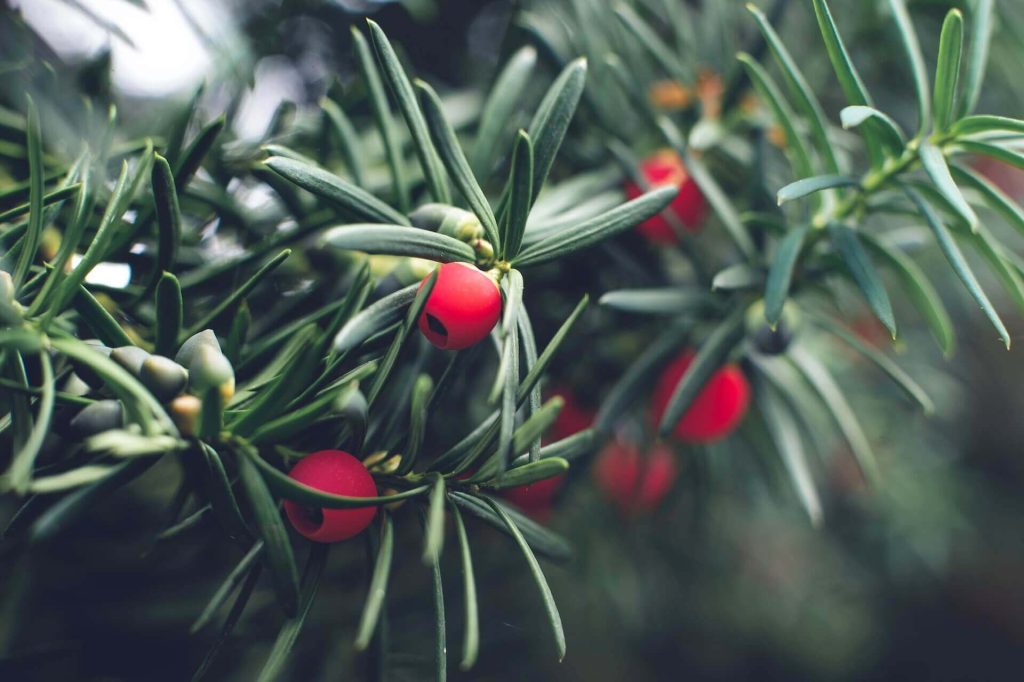

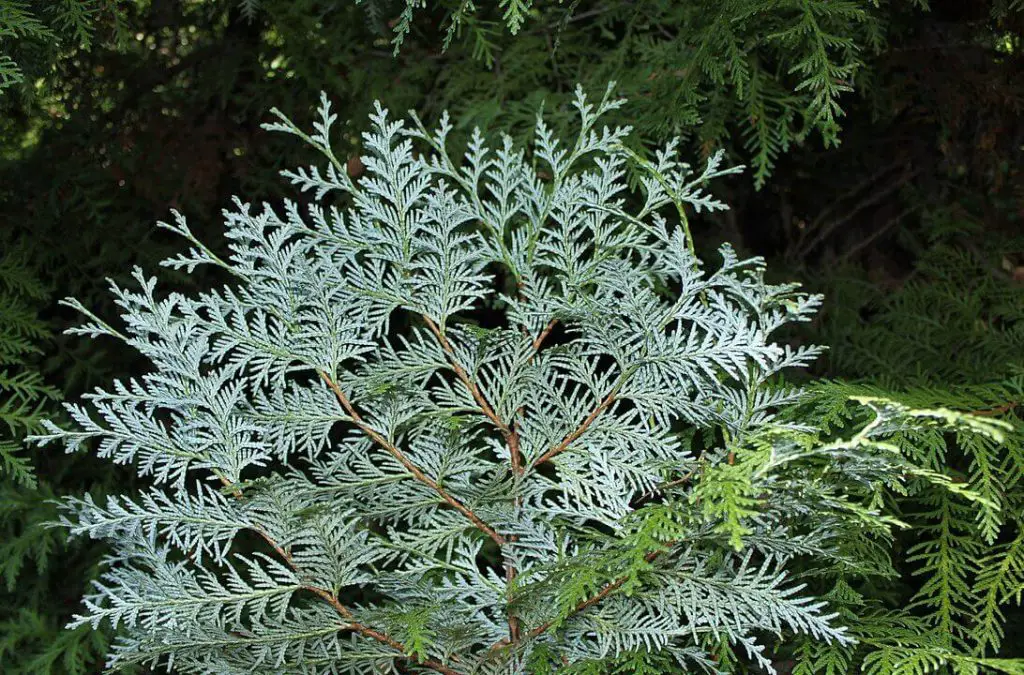

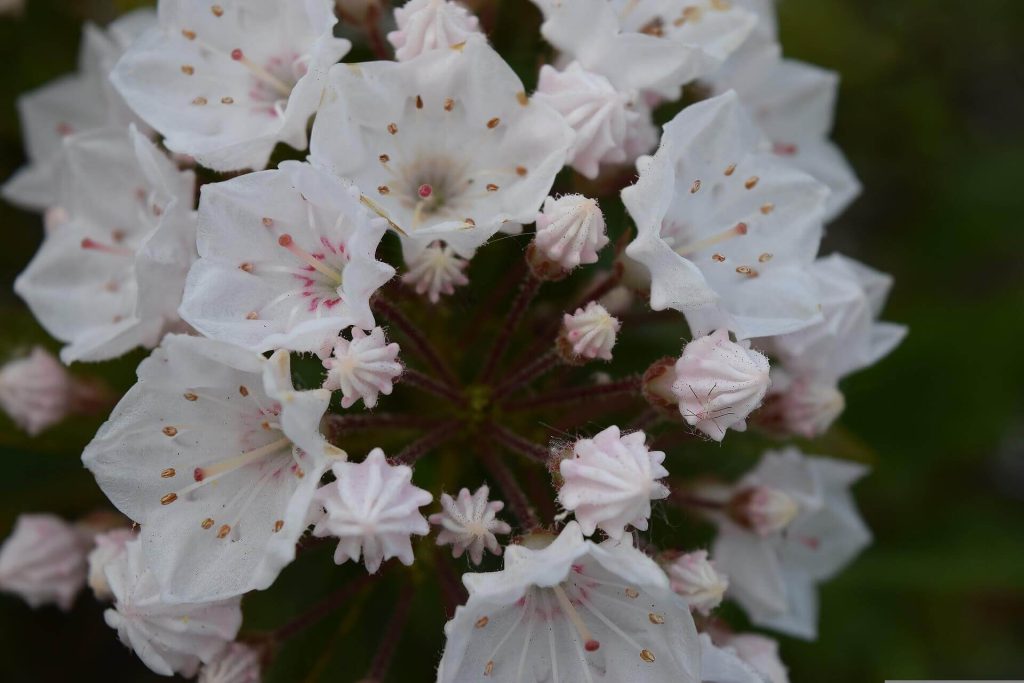
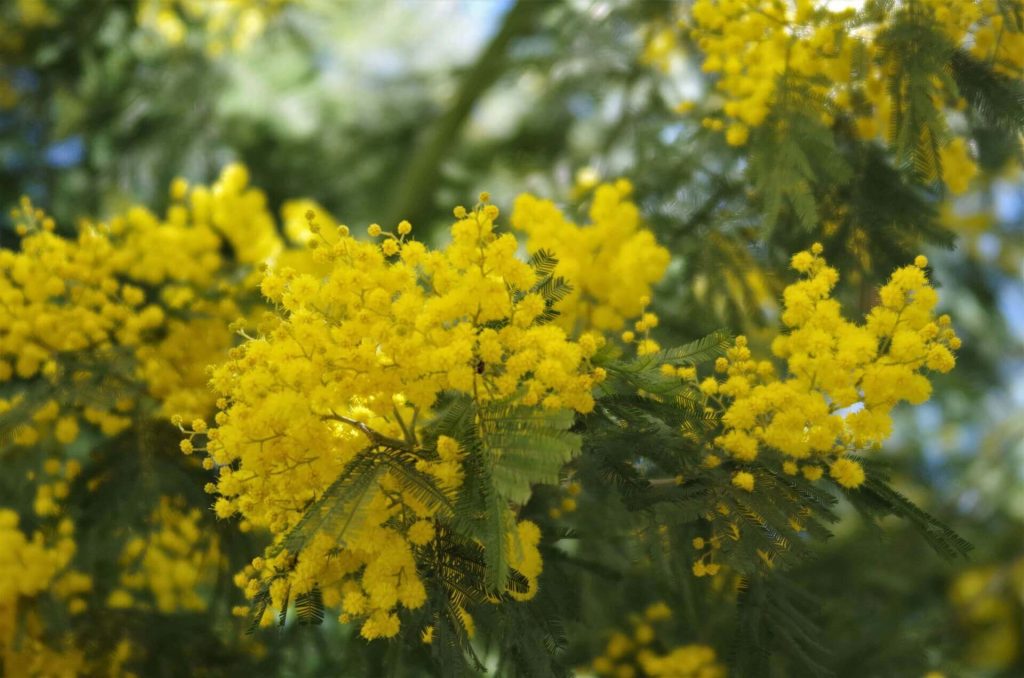

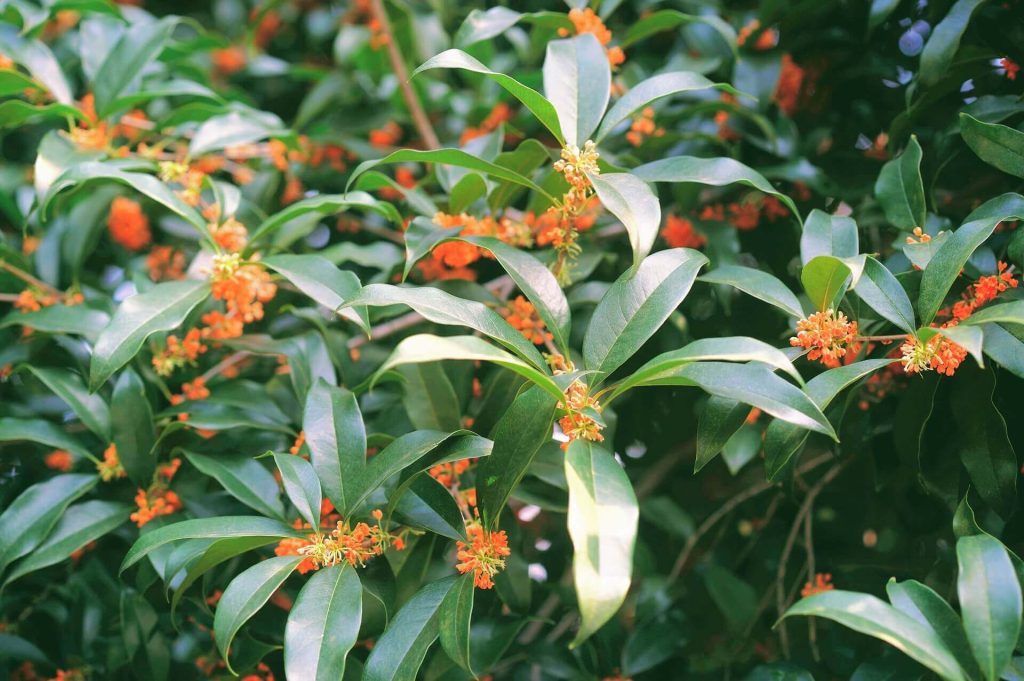
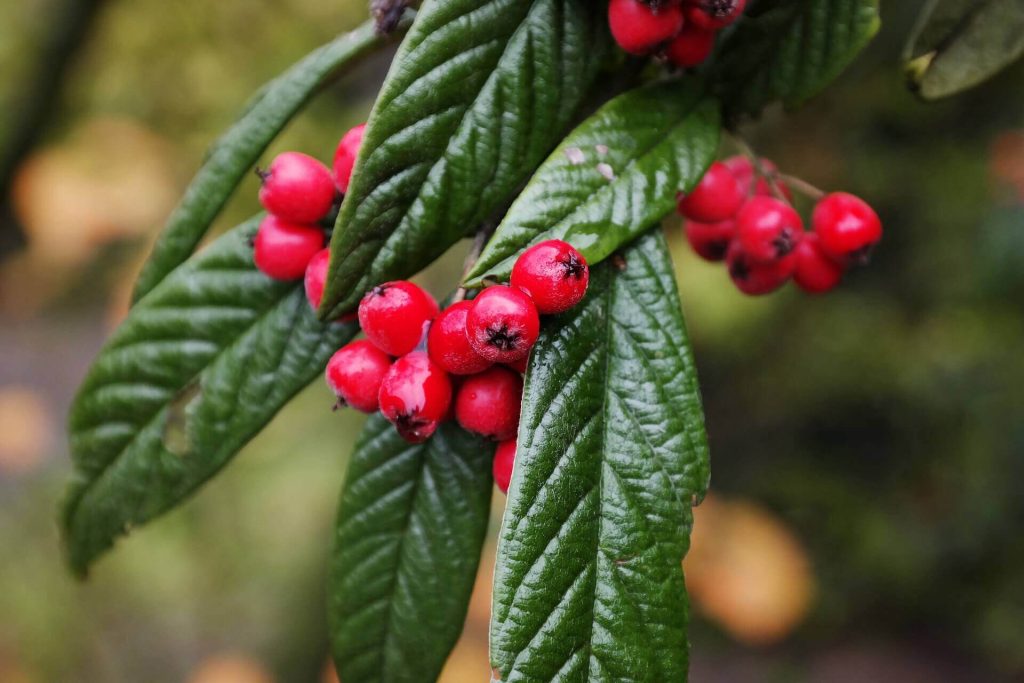

![How To Harvest Oregano Without Killing The Plant? [Personal Experience!]](https://aboveandbeyondgardening.com/wp-content/uploads/2022/10/How-To-Harvest-Oregano-Without-Killing-The-Plant-7-768x442.jpg)
![15 Companion Plants For Cantaloupe & What To Avoid! [2023]](https://aboveandbeyondgardening.com/wp-content/uploads/2022/11/companion-plants-for-cantaloupe-2-768x512.jpg)
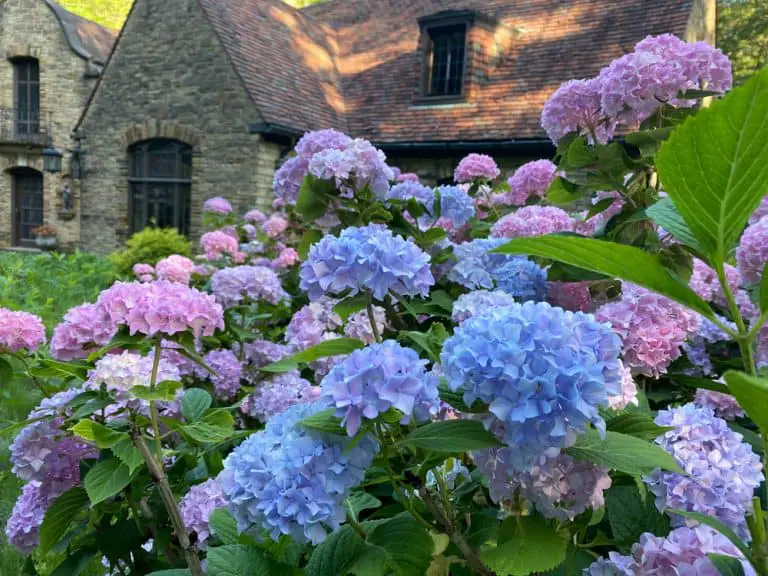
![15 Companion Plants For Asparagus To Help It THRIVE! [2023]](https://aboveandbeyondgardening.com/wp-content/uploads/2022/11/companion-plants-for-asparagus-768x510.jpg)
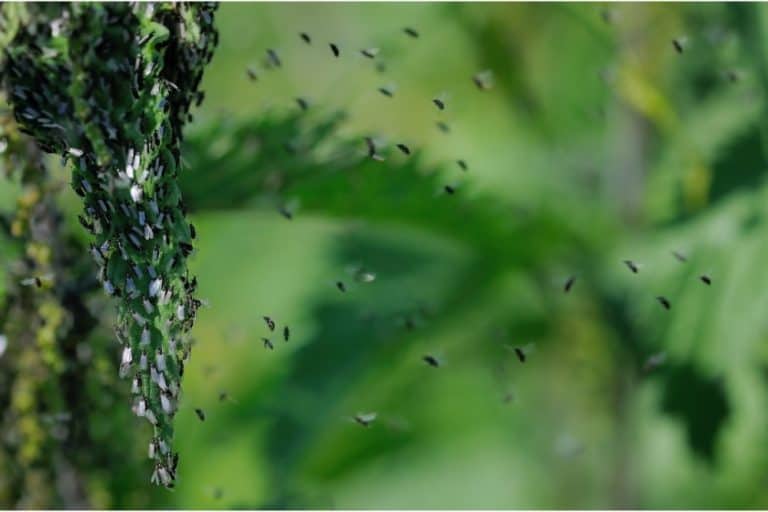
![How To Keep Squirrels Out Of Flower Pots [2022 Guide]](https://aboveandbeyondgardening.com/wp-content/uploads/2021/10/How-To-Keep-Squirrels-Out-Of-Flower-Pots-768x512.jpg)
